Are you tired of serving dry, flavorless turkey that leaves your guests reaching for extra gravy? Boneless turkey breast might be the solution you’ve been looking for. This versatile cut cooks faster than a whole turkey and offers easier carving with less waste.
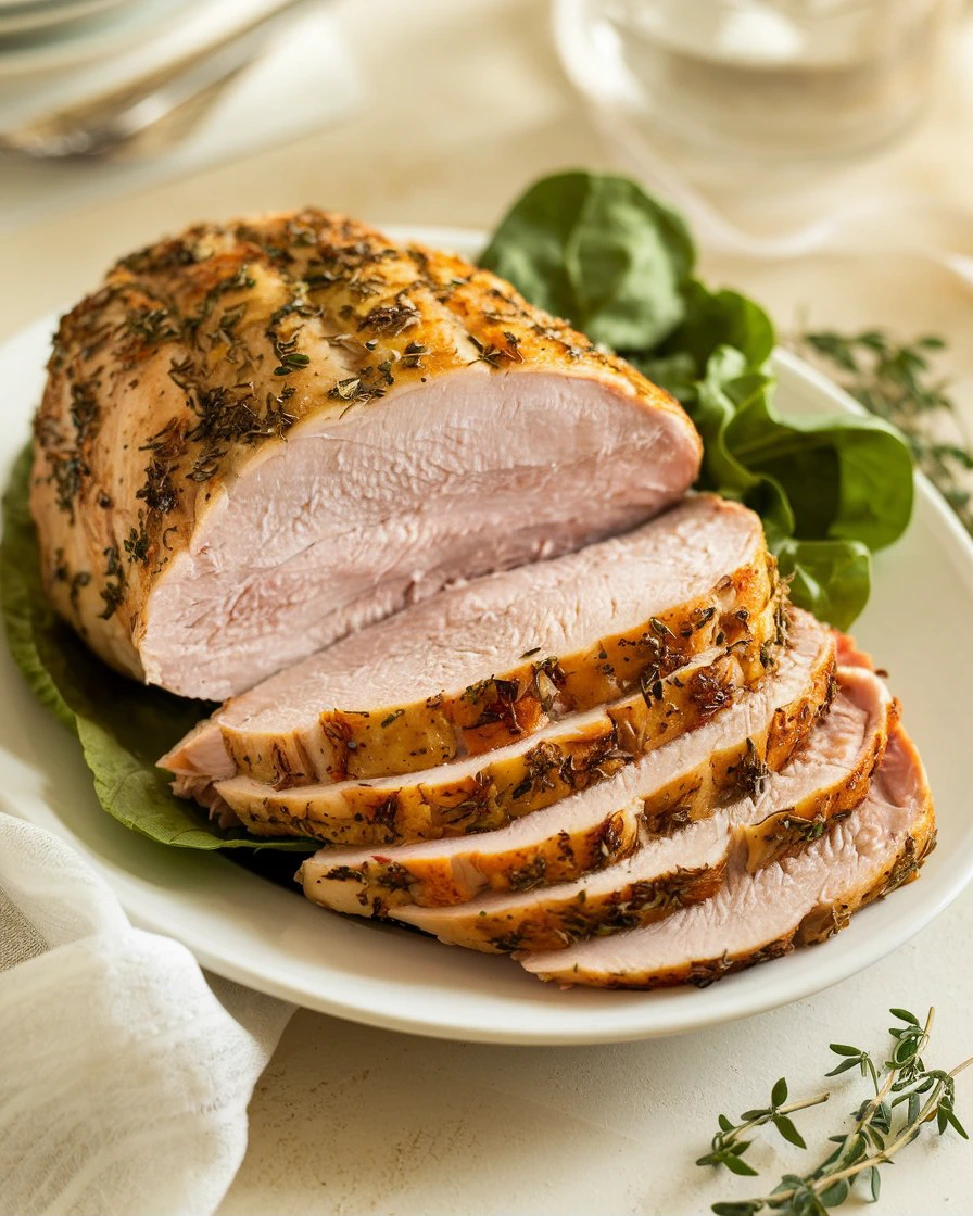
If you are hosting a small holiday gathering, cooking a boneless turkey breast can be a great idea. It can also be a good option if you just want turkey for dinner. Learning to make it can help you improve your cooking skills.
In this guide, we will cover everything you need to know about choosing, preparing, and cooking boneless turkey breast. We will explore different methods to help you cook it perfectly. From traditional roasting to innovative sous vide techniques, you’ll discover how to achieve juicy, tender results every time.
What is Boneless Turkey Breast?
Boneless turkey breast is exactly what it sounds like—turkey breast meat with the bones removed. You can typically purchase this cut from the pectoral muscles of the turkey, with or without skin. The boneless option offers several advantages over bone-in varieties:
- Faster cooking time: Without bones to insulate the meat, boneless breasts cook more quickly
- Easier carving: No navigating around bones means clean, presentation-worthy slices
- Even cooking: The uniform shape allows for more consistent doneness throughout
- flexibility: Works with multiple cooking methods and easily takes on flavors from rubs, brines, and marinades
A typical boneless turkey breast weighs 2 to 4 pounds. It can serve about 4 to 8 people. This makes it great for small gatherings or families who like white meat.
Buying Guide
Where to Buy Boneless Turkey Breast
Boneless turkey breast is widely available year-round, though selection increases during holiday seasons:
- Grocery stores: Most chains carry frozen boneless turkey breasts, with fresh options appearing seasonally
- Butcher shops: Local butchers often offer higher quality cuts and can prepare custom sizes
- Online retailers: Specialty meat providers like Porter Road, D’Artagnan, and Crowd Cow deliver straight to your door
- Farmers markets: For the freshest local options, especially heritage breeds
What to Look For Boneless Turkey Breast
When selecting your boneless turkey breast:
- Size: Choose based on your serving needs (½ pound per person is a good estimate)
- Skin-on vs. skinless: Skin-on provides natural basting and crispy texture; skinless is leaner
- Color: Look for pink meat without gray areas or fading
- Labeling: Check processing dates and “use by” information
- Additives: Some commercial options contain saline solutions—read ingredient lists carefully
Fresh vs. Frozen For Boneless Turkey Breast
Fresh boneless turkey breast offers convenience with no thawing required. However, truly fresh turkey has a relatively short shelf life of 1-2 days. Many stores offer “fresh” turkeys that they actually previously froze.
You can find frozen boneless turkey breast available year-round, and you can store it for up to 12 months. Quality remains excellent when properly thawed. Plan ahead, as safe thawing requires 24-48 hours in the refrigerator.
Organic vs. Conventional
Organic turkey breasts come from birds raised without medications, hormones, or GMO feed. They typically have:
- More complex flavor
- No artificial ingredients
- Higher cost (approximately 30-50% more)
Conventional turkey breasts are more accessible and cost-effective. Quality varies by brand, so it’s good to look into their production methods.
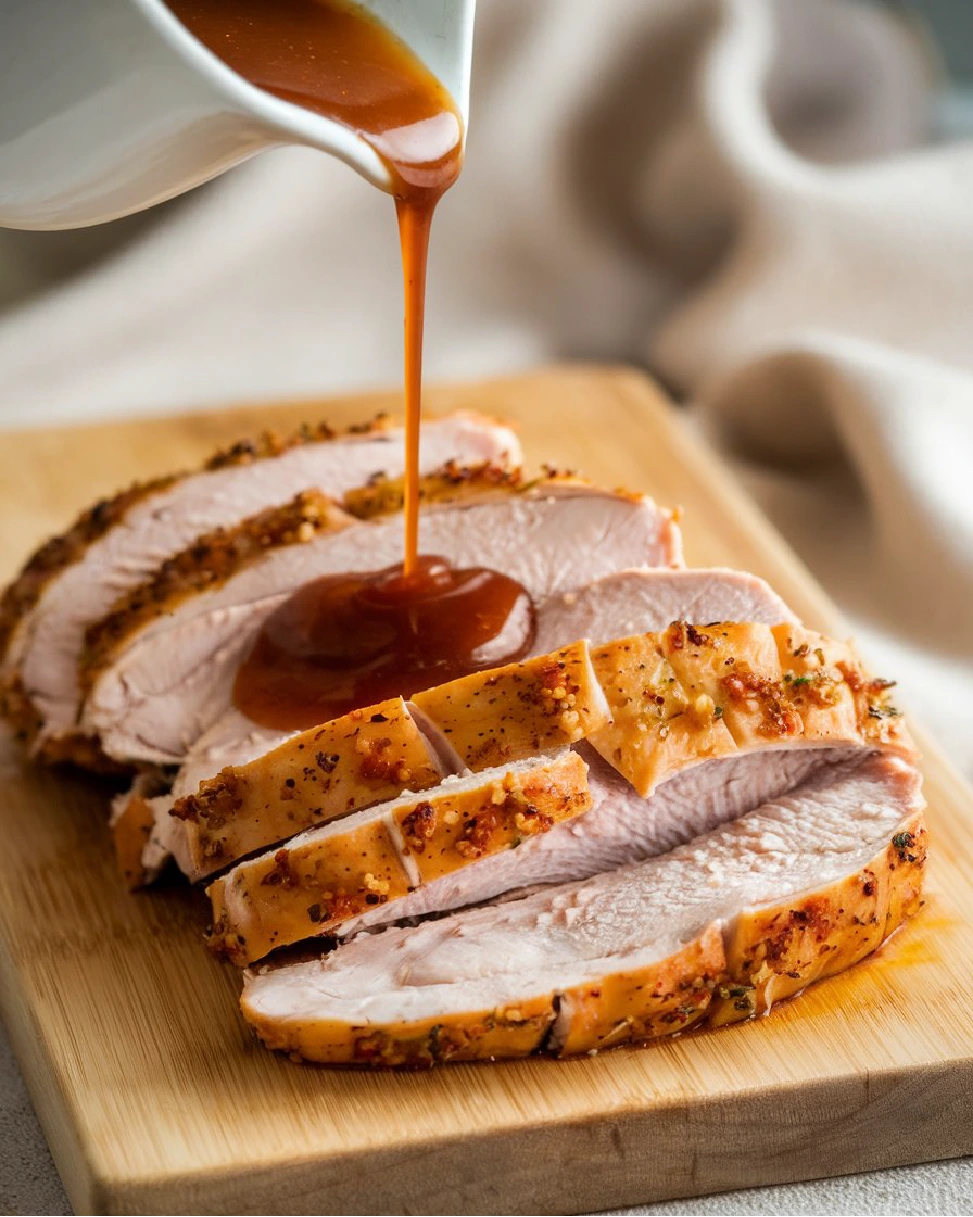
Preparation Boneless Turkey Breast
Thawing
Safe thawing is crucial for food safety and quality results:
- Refrigerator method (recommended): Put the frozen turkey breast in a container to catch drips. Refrigerate it for 24 hours for every 4-5 pounds.
- Cold water method (faster): Submerge sealed turkey in cold water, changing water every 30 minutes. Allow about 30 minutes per pound
- Never thaw at room temperature, as this allows bacterial growth in outer layers
Brining
Brining is one of the most effective techniques for ensuring juicy boneless turkey breast. The salt solution helps meat retain moisture during cooking.
Basic Wet Brine Formula:
- 1 gallon cold water
- ¾ cup kosher salt
- ½ cup sugar (optional)
- Aromatics: garlic, herbs, citrus, peppercorns as desired
Submerge turkey completely and refrigerate for 4-8 hours.
Dry Brining
Dry brining offers similar benefits with less mess:
- Pat turkey breast dry with paper towels
- Apply kosher salt (approximately ½ teaspoon per pound) all over the surface
- Refrigerate uncovered for 24-48 hours
- Rinse briefly before cooking if desired, then pat dry
Marinades
Marinades add flavor while tenderizing:
Herb and Citrus Marinade:
- ½ cup olive oil
- ¼ cup lemon juice
- 4 garlic cloves, minced
- 2 tablespoons fresh herbs (rosemary, thyme, sage)
- 1 tablespoon honey
- Salt and pepper
Marinate refrigerated for 4-12 hours.
Rubs and Seasonings
Rubs create flavorful crusts:
- 2 tablespoons brown sugar
- 1 tablespoon kosher salt
- 2 teaspoons black pepper
- 1 teaspoon garlic powder
- 1 teaspoon onion powder
- 1 teaspoon dried thyme
- 1 teaspoon dried sage
- ½ teaspoon paprika
Apply liberally to turkey breast before cooking.
Cooking Methods For Boneless Turkey Breast
Roasting
Roasting is the traditional method for cooking boneless turkey breast, creating a crispy exterior while maintaining juicy meat inside.
Temperature and Timing Chart:
Weight Temperature Cooking Time
2-3 lbs 325°F 60-75 minutes
3-4 lbs 325°F 75-90 minutes
4-5 lbs 325°F 90-120 minutes
Tips for a Moist Roasted Turkey:
- Place turkey breast on a rack in a roasting pan
- Add 1 cup of broth or water to the pan bottom
- Cover loosely with foil for the first two-thirds of cooking time
- Remove foil for the final third to crisp the skin
- Baste every 30 minutes with pan juices
Step-by-Step Roasted Boneless Turkey Breast Recipe:
- Preheat oven to 325°F
- Pat turkey breast dry and apply your chosen rub or seasonings
- Place on a rack in a roasting pan, skin side up
- Add 1 cup chicken broth to pan bottom
- Roast until internal temperature reaches 165°F, basting occasionally
- Rest for 15-20 minutes before slicing
Crockpot/Slow Cooker
The slow cooker method is practically foolproof and perfect for busy days when you can’t monitor the oven.
Benefits of Slow Cooking Turkey Breast:
- “Set and forget” convenience
- Consistently moist results
- Frees oven space for side dishes
Timing: Cook on LOW for 5-6 hours or HIGH for 3-4 hours (for a 3-pound breast)
Crockpot Boneless Turkey Breast Recipe:
- Create a vegetable platform with onions, carrots, and celery in the slow cooker bottom
- Rub turkey breast with butter, herbs, salt, and pepper
- Place breast on vegetable platform
- Add ½ cup chicken broth or white wine
- Cook on LOW until internal temperature reaches 165°F
- Optional: Transfer to broiler for 5 minutes to crisp skin before serving
Smoking
Smoking imparts incredible flavor to boneless turkey breast and creates a beautiful color.
Best Wood Types for Turkey:
- Apple: mild, sweet flavor
- Cherry: subtle fruity notes
- Maple: light sweetness
- Pecan: nutty, medium-strong flavor
Temperature: Maintain 225-250°F smoker temperature
Timing: Approximately 30-40 minutes per pound
Smoked Boneless Turkey Breast Recipe:
- Brine turkey breast overnight for best results
- Pat dry and apply a light coating of oil
- Season with your favorite rub
- Smoke at 225°F until internal temperature reaches 165°F (about 2-3 hours for a 3-pound breast)
- Rest for 20 minutes before slicing
Grilling
Grilling adds smoky flavor with the convenience of not heating your kitchen.
Techniques:
- Indirect heat: Set up grill with heat on one side, place turkey on the other
- Direct then indirect: Start with high heat to sear, then move to cooler zone to finish
Temperature: Medium heat (around 350°F)
Timing: Approximately 15-20 minutes per pound with indirect heat
Grilled Boneless Turkey Breast Recipe:
- Prepare grill for indirect cooking
- Pat turkey dry and brush with oil
- Season as desired
- Sear skin side down over direct heat for 3-4 minutes
- Move to indirect heat, close lid
- Cook until internal temperature reaches 165°F
- Rest 15 minutes before carving
Sous Vide
Sous vide cooking ensures perfectly even doneness throughout the meat.
Benefits:
- Precise temperature control
- Impossible to overcook
- Unparalleled juiciness
Temperature and Timing:
- 145°F for 2.5-4 hours: Exceedingly tender, succulent
- 150°F for 2.5-4 hours: Traditional texture, still juicy
Sous Vide Turkey Breast Recipe:
- Season turkey breast with salt, pepper, and herbs
- Seal in vacuum bag with a tablespoon of butter
- Cook at 145°F for 3 hours
- Remove from bag and pat dry
- Sear in hot skillet with butter for 1-2 minutes per side
- Slice immediately (no rest required)
Air Fryer
The air fryer provides convection benefits in a compact appliance for quick cooking.
Benefits:
- Faster cooking than conventional oven
- Crispy skin without additional oil
- Energy efficient for small portions
Air Fryer Boneless Turkey Breast Recipe:
- Preheat air fryer to 350°F
- Rub turkey breast with oil, herbs, salt, and pepper
- Place in air fryer basket, skin side down
- Cook for 25 minutes
- Flip and cook until internal temperature reaches 165°F (about 20-25 minutes more)
- Rest for 10 minutes before slicing
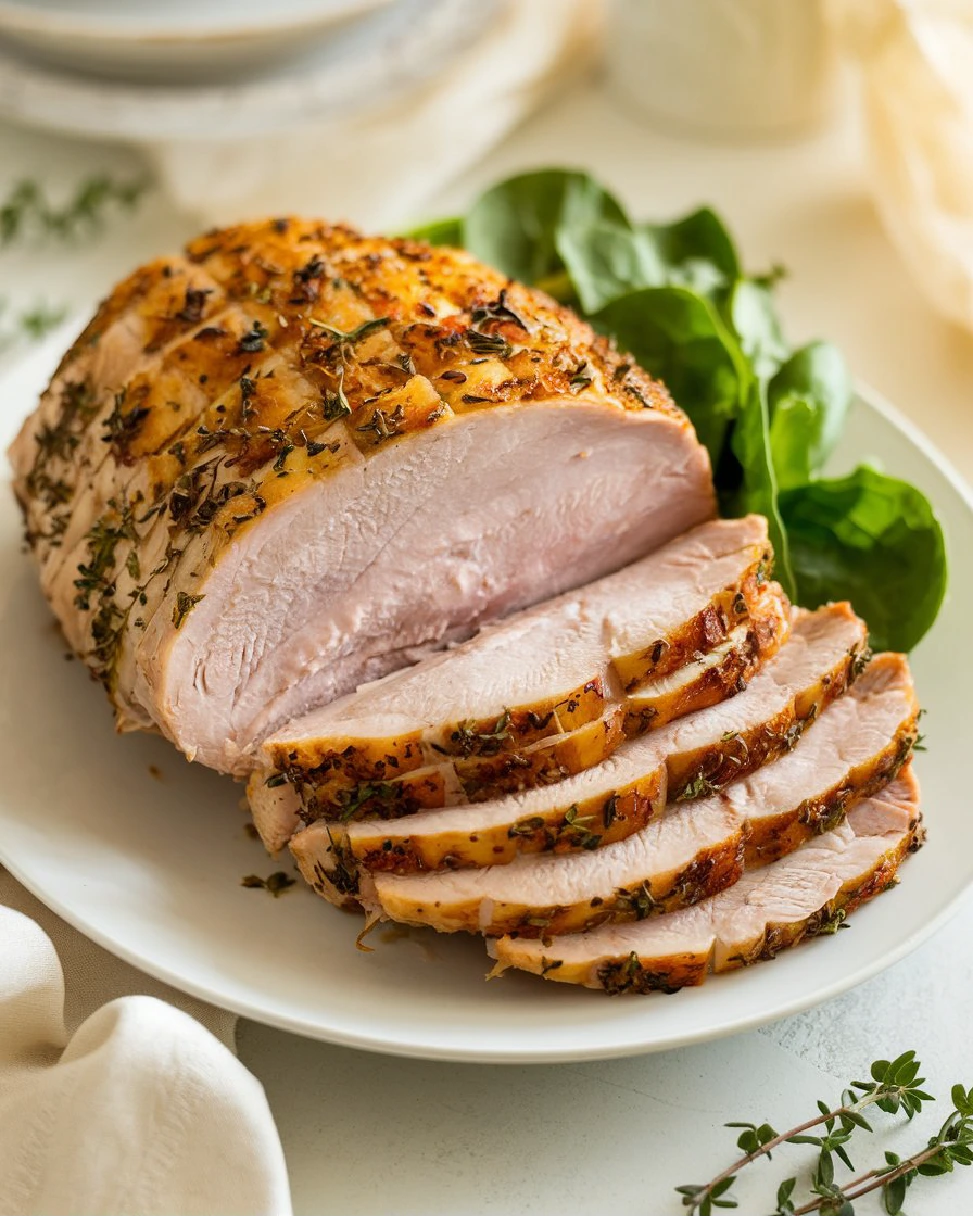
Doneness Testing
Regardless of cooking method, proper doneness testing ensures both safety and quality.
Using a Meat Thermometer
An instant-read digital thermometer is essential for cooking turkey perfectly:
- Insert into the thickest part of the breast
- Avoid touching bone, fat, or the pan
- Safe internal temperature is 165°F
- For juicier results, some chefs pull turkey at 160°F and let carryover heat finish cooking during rest
Visual Cues
While a thermometer is most reliable, visual indicators include:
- Clear juices (not pink) when meat is pierced
- Firm, springy feel when pressed
- No visible pink meat
Resting and Carving
The Importance of Resting
Resting allows juices to redistribute throughout the meat:
- Cover loosely with foil
- Rest for 15-20 minutes minimum (proportional to size)
- Internal temperature will rise 5-10 degrees during rest
Carving Techniques
For beautiful presentation:
- Place turkey on cutting board
- Use a sharp carving knife (not serrated)
- Slice against the grain in thin, even pieces
- For best presentation, angle knife slightly
Serving Suggestions For Boneless Turkey Breast
Complement your perfectly cooked boneless turkey breast with:
Classic Side Dishes:
- Mashed potatoes
- Cranberry sauce
- Green bean casserole
- Stuffing (prepared separately)
Sauces and Gravies:
- Traditional turkey gravy
- Herb butter
- Cranberry chutney
- White wine cream sauce
Storage and Reheating
Storage
Properly store leftovers for safety and taste:
- Refrigerate within two hours of cooking
- Store in shallow, airtight containers
- Use within 3-4 days
- Freeze for up to 3 months
Reheating Methods
Prevent dryness when reheating:
- Oven method: Wrap in foil with a splash of broth, heat at 300°F until warmed through
- Microwave: Cover with damp paper towel, use 50% power
- Stovetop: Slice thinly and warm gently in gravy or broth
Troubleshooting
Dry Turkey Breast
Causes:
- Overcooking
- No brining/insufficient preparation
- High cooking temperature
Solutions:
- Use meat thermometer to avoid overcooking
- Brine before cooking
- Cover while roasting
- Serve with gravy or sauce
Undercooked Turkey
Signs:
- Pink juices
- Soft, rubbery texture
- Internal temperature below 165°F
Solutions:
- Return to heat source
- Continue cooking until proper temperature is reached
- For next time: Check temperature in multiple spots
Burnt Exterior
Causes:
- Oven too hot
- Cooking time too long
- Sugar in rubs burning
Solutions:
- Cover with foil
- Reduce oven temperature
- Use rubs with less sugar
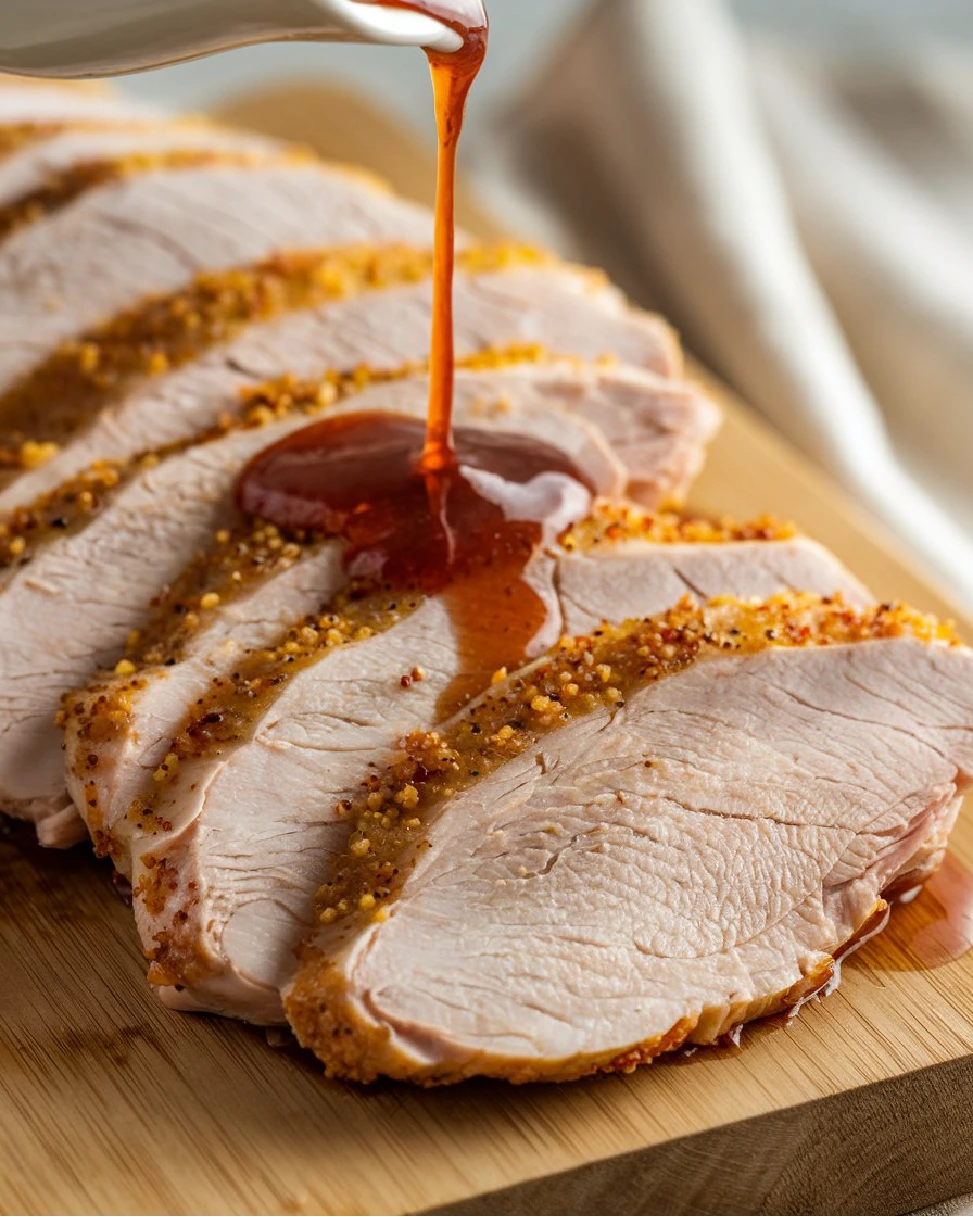
FAQ
Yes! Butterflied boneless turkey breasts can be stuffed, rolled, and tied before cooking.
Plan for ½ pound per person for a main dish.
Experts don’t recommend it for safety and quality reasons. Always thaw first.
3-4 days refrigerated, 2-3 months frozen.
Turkey tenderloin is a specific part of the breast that’s smaller and more tender.
“Looking for a more flavorful twist? Try this smoked turkey breast recipe for a deliciously smoky finish.”
Conclusion
Mastering how to cook boneless turkey breast opens a world of culinary possibilities beyond holiday dinners. This cut cooks faster and is easier to carve than whole turkeys. It deserves a regular place in your meals.
No matter if you roast, smoke, grill, or use another cooking method, the keys to success are the same. You need proper preparation, temperature control, and enough resting time.
By following the steps in this guide, you can serve juicy, tasty boneless turkey breast. Your family and friends will feel impressed any time of the year. Remember that practice makes perfect—don’t be afraid to experiment with different techniques until you find your favorite method.
Which cooking method will you try first? No matter which you choose, we’re confident you’ll achieve delicious results with tested techniques.
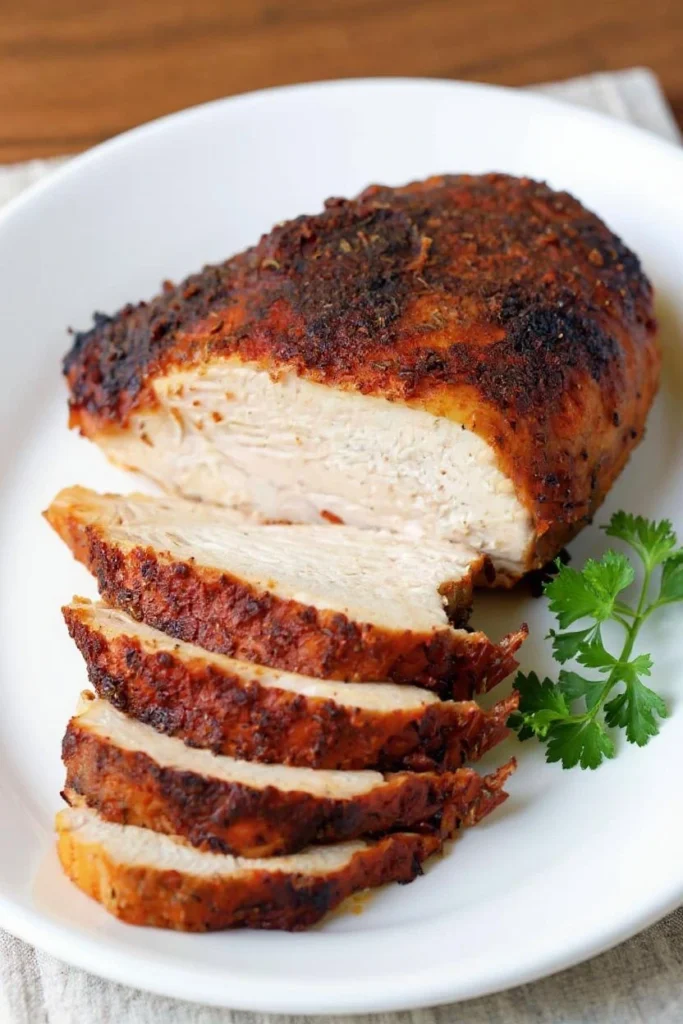
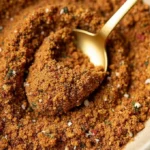
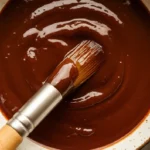
Pingback: Smoked Turkey Breast
Pingback: Gravy Recipe - How to Make